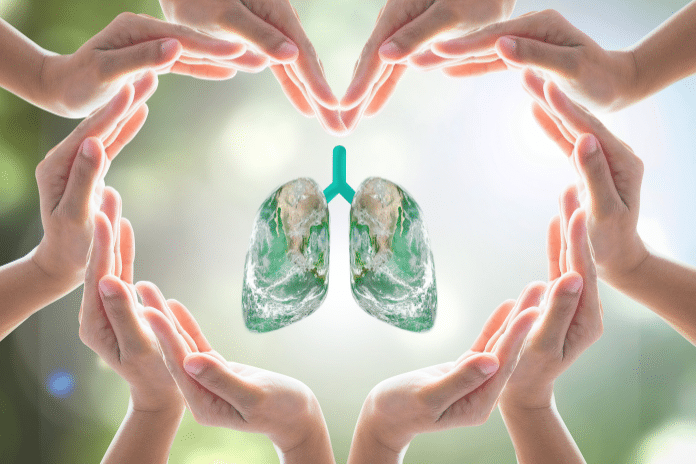Tobacco use remains one of the leading causes of preventable death worldwide, with a direct link to various types of cancer. Among these, lung cancer stands out as one of the most prevalent and deadly forms of cancer associated with tobacco consumption. Understanding the connection between tobacco and cancer is crucial for raising awareness and promoting healthier lifestyle choices.
Furthermore lung cancer is often referred to as the silent killer because symptoms may not manifest until the disease has progressed to advanced stages. However, being aware of the common lung cancer symptoms can aid in early detection and treatment. Persistent cough, chest pain, shortness of breath, wheezing, and coughing up blood are all warning signs that should prompt further evaluation by a healthcare professional.
Here’s a breakdown of some of the key health consequences of tobacco use
1. Cancer: Tobacco use is a leading cause of various types of cancer, including lung cancer, throat cancer, mouth cancer, esophageal cancer, pancreatic cancer, bladder cancer, and cervical cancer. The harmful chemicals in tobacco smoke damage DNA and increase the risk of cancer development.
2. Respiratory Diseases: Moreover, smoking can cause chronic obstructive pulmonary disease (COPD), including chronic bronchitis and emphysema. It damages the airways and air sacs in the lungs, leading to difficulty breathing, coughing, wheezing, and shortness of breath.
3. Cardiovascular Diseases: Tobacco use is a major risk factor for heart disease and stroke. In addition to heart disease, It damages blood vessels, increases blood pressure, and promotes the formation of blood clots, leading to heart attacks and strokes.
4. Respiratory Infections: Smokers are more susceptible to respiratory infections such as pneumonia and influenza due to weakened immune function and damaged respiratory tissues.
5. Reproductive Issues: Smoking can affect fertility in both men and women.It increases the risk of erectile dysfunction in men as well as can lead to complications during pregnancy, including miscarriage, preterm birth, low birth weight, and birth defects.
6. Vision Problems: Tobacco use is associated with an increased risk of age-related macular degeneration (AMD) and also a leading cause of vision loss in older adults.
7. Oral Health Problems: Smoking can cause gum disease, tooth decay, tooth loss, and oral cancer. It also contributes to bad breath and stained teeth.
8. Skin Damage: Tobacco smoke contains toxins that can damage the skin and accelerate the aging process which can lead to wrinkles, sagging skin, and an increased risk of skin cancer.
9. Bone Health: Smoking is linked to decreased bone density and an increased risk of osteoporosis, a condition characterized by weak and brittle bones.
10. Mental Health: Tobacco use is associated with an increased risk of depression, anxiety, and other mental health disorders. Quitting smoking can improve mental well-being and quality of life.

Steps to you need to know about cancer to mitigate its effect
2. Recognizing Lung Cancer Symptoms
– Lung cancer symptoms may not appear until advanced stages.
– Awareness of symptoms like persistent cough and chest pain is vital.
– Early detection improves treatment outcomes.
3. Diagnostic Tool: Lung X-Ray
– Lung X-rays can detect abnormal masses or nodules.
– Routine screening is recommended, especially for smokers or high-risk individuals.
– Early detection through screening enhances survival rates.
4. Tobacco and Lung Cancer
– Tobacco smoke contains carcinogens that damage lung cells.
– Quitting smoking is the most effective way to reduce lung cancer risk.
– Tobacco use is the primary cause of lung cancer worldwide.
5. Cancers in the Throat
– Tobacco use is linked to cancers in the throat, including throat cancer.
– Symptoms of throat cancer include persistent sore throat and difficulty swallowing.
– Early detection is critical for improving outcomes in throat cancer cases.
6. Addressing Tobacco Use
– Tobacco control measures include public health campaigns and policies.
– Smoking cessation programs provide support for quitting.
– Efforts to reduce tobacco use are essential for preventing cancer and other health issues.
In conclusion, this use is a major risk factor for various types of cancer, including lung cancer and cancers in the throat. Understanding the deadly link between tobacco and cancer is essential for promoting public health and preventing unnecessary suffering and death. By raising awareness, implementing effective tobacco control measures, and supporting smoking cessation efforts, we can reduce the burden of tobacco-related diseases and create a healthier future for generations to come.


